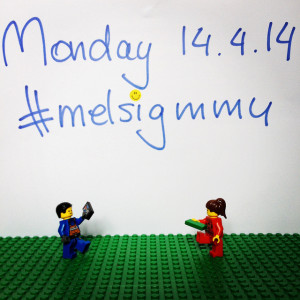Sally Burr from the Technology Enhanced Learning (TEL) team recently attended the Media-Enhanced Learning Special Interest Group (MELSIG).
The ‘Smart Devices for Learning’ event hosted by Manchester Metropolitan University explored the impact that Smart technology – mobile devices, tablets, apps and social media – are having upon teaching and learning.
Opportunities, ideas, and challenges were explored throughout the day by various learning technology professionals and academics who have been experimenting with new approaches to using technology in their courses.
Below are some brief highlights from what was a very engaging and digitally active event (tagged #MELSIGMMU), even ‘trending’ at number 77 in the UK for 35 minutes!
New Technologies in HE
The technologies that were creating excitement in teaching included:
- game based pedagogy (Kahoot)
- teaching using social media
- teaching with augmented reality via Aurasma
- iPads in healthcare education
- BYOD4L (Bring Your Own Device for Learning) and iTunes U
Technology in Mind
Simon Thomson, Head of E-Learning at Leeds Metropolitan University explored the array of learning opportunities enabled by Smart technology via a ‘Smart’ paper origami.
Simon discussed:
- Google Hangouts for personal tutoring sessions
- Padlet.com to anonymously collect student ideas
- Running lectures online using Adobe Connect
- Using Google+ to build an online community
- Use Panopto to record lectures as a revision tool for students
- Embedding the use of Pebblepad for reflection across the whole course
- Use Twitter hashtags and live twitter feeds for comments during lectures
You can view Simon Thomson’s origami and if you would like to create your own you can do so by following these simple folding instructions.
The Problem of Numbers
Peter Gough, senior lecturer in Dental Technology at Manchester Metropolitan University impressed the audience with his own app for dental students.
Peter designed the app to allow students to view intricate procedures close-up. As class sizes increased, students could no longer gather round Peter’s desk to watch what he was doing. Using Xcode, Peter created an app which provided video and audio instructions thus enabling students to work on minute dental procedures via their mobile phone. The students loved it. You can read more about it here at the MMU’s Digital Innovation blog.
Speed Readers
Peter continued to intrigue by introducing the speed reading app Spritz. Many had not seen the speed reading app before – an app that enables the reader to increase their reading speed from an average of 300 words per minute (WPM) to a zippier 600 WPM. According to Forbes, 600 WPM is the speed at which a ‘high-flying executive’ reads and one which they claim we should all aspire to!
There is considerable debate as to whether speed reading would be useful in fully absorbing information. However, whatever your position, you might be interested in viewing the streaming content reader and having a go at ‘spritzing’ for yourself.
Ten days of Twitter
‘Ten Days of Twitter’ – an online open course which supports ‘brand new’ or ‘nearly new’ users to learn the Twitter ropes and develop proficiency in just ten days – was widely celebrated by MELSIG.
The TEL team will be running its own Ten Days of Twitter course at Sussex soon. Watch this space for more details.
If you would like to take a closer look at the dental app or any of the other technology enhanced learning presentations, you can view the complete set of presentations made available by MELSIG.
Follow Sally Burr on Twitter: @burrblog



